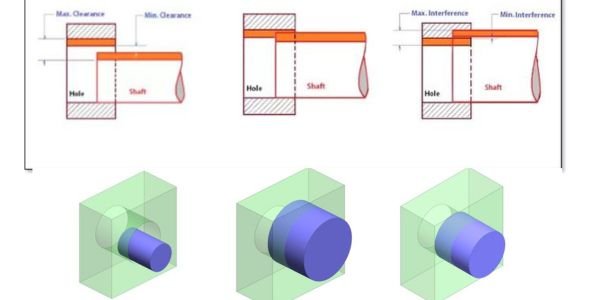Table of Contents
Introduction:
Gate valves are essential components used in various industries to control the flow of liquids and gases. With their sturdy construction and efficient operation, gate valves play a crucial role in regulating fluid flow.
Working Principle of Gate Valve

A gate valve operates by the lifting or lowering of a gate (also known as a wedge) within the valve body to control the flow of fluids. The gate is typically connected to a threaded stem or a handwheel that allows manual operation. The key components of a gate valve include the body, bonnet, gate, stem, and seat.
When the gate valve is fully open, the gate is lifted completely, allowing unrestricted fluid flow. Conversely, when the gate valve is fully closed, the gate seals against the seat, effectively stopping the flow of fluids. The flow control mechanism of a gate valve makes it an ideal choice for applications that require either full flow or complete shut-off.
Gate Valve Construction
1: Body and Bonnet
The body of a gate valve serves as the main structure, housing all the internal components. It is typically made of durable materials such as cast iron, stainless steel, or bronze, depending on the specific application requirements. The body is designed to withstand high pressure and provide a robust enclosure for the valve mechanism.
The bonnet is attached to the top of the body and serves as a cover, providing access to the internal parts. It helps seal the valve and houses the stem and other components that facilitate the operation of the gate valve.
2: Gate and Seat
The gate, also known as the wedge, is the key element responsible for controlling the flow of fluids in a gate valve. It moves up and down within the body, allowing or blocking the passage of fluids. The gate is typically constructed with materials such as stainless steel, brass, or cast iron, depending on the nature of the fluid and the operating conditions.
The seat is the sealing surface against which the gate rests when in the closed position. It ensures a tight seal to prevent fluid leakage when the gate valve is fully closed. Seats are usually made of resilient materials like rubber, brass, or stainless steel, chosen based on compatibility with the fluid being controlled.
3: Stem and Stem Nut
The stem is a vertical component that connects the gate to the actuating mechanism, allowing the user to control the opening and closing of the valve. It extends from the top of the gate valve through the bonnet and is typically threaded for smooth operation. The stem is usually made of stainless steel or other corrosion-resistant materials to withstand the environment.
The stem nut is located at the top of the bonnet and engages with the stem. It translates the linear motion of the stem into the rotational motion required for opening or closing the gate valve. The stem nut ensures smooth and precise operation of the gate valve, facilitating efficient fluid control.
4: Handwheel or Actuator
The handwheel is a manual actuating mechanism commonly found on gate valves. It is connected to the stem, allowing users to operate the valve by rotating the handwheel clockwise or counterclockwise. The handwheel provides leverage and control, making it easy to open or close the valve as needed.
An actuator replaces the handwheel in some gate valves, especially those used in automated systems. Actuators can be electric, pneumatic, or hydraulic, and they provide automated control over the gate valve, allowing remote operation and integration with control systems.
Applications of Gate Valve
1. Oil and Gas Industry:
Gate valves are extensively used in the oil and gas industry, particularly in exploration, production, and refining processes. They are employed in pipelines, refineries, and storage tanks to regulate the flow of crude oil, natural gas, and petroleum products.
2. Water Treatment Plants:
Gate valves find widespread usage in water treatment plants to control the flow of water through pipelines, allowing for efficient distribution and control of water resources.
3. Power Generation:
In power plants, gate valves are crucial for controlling the flow of steam, cooling water, and other fluids in various systems, such as boilers, turbines, and condensers.
4. Chemical and Pharmaceutical Industries:
Gate valves play a vital role in chemical and pharmaceutical manufacturing processes, where precise control over fluid flow is necessary to ensure optimal production and safety.
5. HVAC Systems:
Heating, ventilation, and air conditioning (HVAC) systems incorporate gate valves to regulate the flow of air, water, and refrigerant in the design, facilitating efficient temperature control.
Section 4: Types of Gate Valves
1. Rising Stem Gate Valve:
In this type of gate valve, the stem moves upwards or downwards as the valve is operated, providing a visual indication of the valve’s position (open or closed). Rising stem gate valves are commonly used in applications where the valve’s status needs to be monitored visually.
2. Non-Rising Stem Gate Valve:
In a non-rising stem gate valve, the stem does not move visibly as the valve is operated. This type of valve is suitable for installations with space constraints as it does not require vertical clearance for operation.
3. Wedge Gate Valve:
Wedge gate valves feature a gate with two inclined seating surfaces, forming a wedge shape. These valves provide a tight seal and are preferred in applications where leakage prevention is crucial.
4. Parallel Slide Gate Valve:
Parallel slide gate valves are designed with two parallel gates that move horizontally to control fluid flow. This type of valve offers improved sealing performance and is commonly used in high-pressure and high-temperature applications.
Also, read the Locomotive boiler






























Comment on “Gate Valve: A Guide to its Working, Applications, and Types”
Comments are closed.